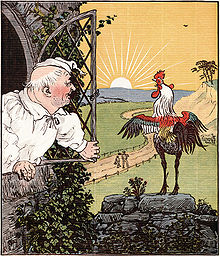카파리스 세피아리아
Capparis sepiaria| 카파리스 세피아리아 | |
|---|---|
 | |
| 과학적 분류 | |
| 킹덤: | 플랜태 |
| 클래드: | 기관지동물 |
| 클래드: | 안기오스페름스 |
| 클래드: | 에우디코츠 |
| 클래드: | 로시즈 |
| 순서: | 브라시칼레스 |
| 패밀리: | 카파라과 |
| 속: | 카파리스 |
| 종: | 세피아리아 |
| 이항식 이름 | |
| 카파리스 세피아리아 l | |
흔히 생울타리 카파리스 세피아리아(Caparis sepiaaria)는 흔히 생울타리 캐퍼(Hedge caper) 또는 야생 캐퍼(Wild caper) 덤불이라고도 하며, 특히 건조한 낙엽성 숲, 구릉지, 문질러진 정글에서 전열 분포가 있는 관목이다.[1][2]
설명
카파리스 세피아리아(Capparis sepiaaria)는 3~5m 높이까지 자라는 따끔따끔한 상록수 관목으로 계절에 흰 꽃이 핀다. 2월부터 꽃이 피고, 4월부터 과일이 발달하기 시작한다.[1]
해비타트
카파리스 세피아리아는 전열대 분포로 아프리카, 스리랑카, 미얀마, 인도, 호주에서 발견되었다. 인도에서는 콜하푸르, 치크마갈루르, 다르와드, 미소르, 시모가, 하이데라바드 등 케랄라와 타밀나두의 여러 지역에서 관찰되어 왔으며, 이룰라족과 같은 현지인들이 다양한 전통 약용으로 친숙한 곳이다.[1]
생태적 의의
라자스탄에서 카파리스 세피아리아가 자라는 지역에서는, 새싹을 먹기 좋아하는 치탈, 삼바, 닐가이 같은 지역 야생동물들에게 중요한 사료로서 보인다.[3]
카파리스속의 많은 구성원들처럼 식물의 다양한 부분, 특히 꽃과 과일은 음식이나 전통의학으로 쓰인다.[1][4][5][6] 꽃은 꿀벌에 의해 수분되고 나무껍질은 남인도의 큰 주황색 티 나비와 노란 주황색 팁 나비의 중요한 애벌레 숙주 식물이다.[1][7]
참조
- ^ a b c d e "Capparis sepiaria L." India Biodiversity Portal. Retrieved 2021-06-29.
- ^ "Capparis sepiaria L. - Encyclopedia of Life". eol.org. Retrieved 2021-06-29.
- ^ Rodgers, W.A. (1990). "Capparis sepiaria L.: an important dry season fodder plant for wildlife". Range Management and Agroforestry. 11 (2): 199–206 – via CAB Direct.
- ^ Sharma, Leena; Khandelwal, Sitaram (2010-02-01). "Traditional Uses of Plants as Cooling Agents by the Tribal and Traditional Communities of Dang Region in Rajasthan, India". Ethnobotanical Leaflets. 2010 (2).
- ^ Hebbar, S.S.; Harsha, V.H.; Shripathi, V.; Hegde, G.R. (2004-10-01). "Ethnomedicine of Dharwad district in Karnataka, India—plants used in oral health care". Journal of Ethnopharmacology. 94 (2–3): 261–266. doi:10.1016/j.jep.2004.04.021. ISSN 0378-8741. PMID 15325728.
- ^ Mishra, S. N.; Tomar, P. C.; Lakra, N. (January 2007). "Medicinal and food value of Capparis—a harsh terrain plant". Indian Journal of Traditional Knowledge. 6 (1). ISSN 0972-5938.
- ^ 카르나타카 산림국 벵갈루루 나비 54페이지 64페이지(http://biodiversitylab.ncbs.res.in/media/ButterfliesOfBengaluruBook_Sample.pdf)


